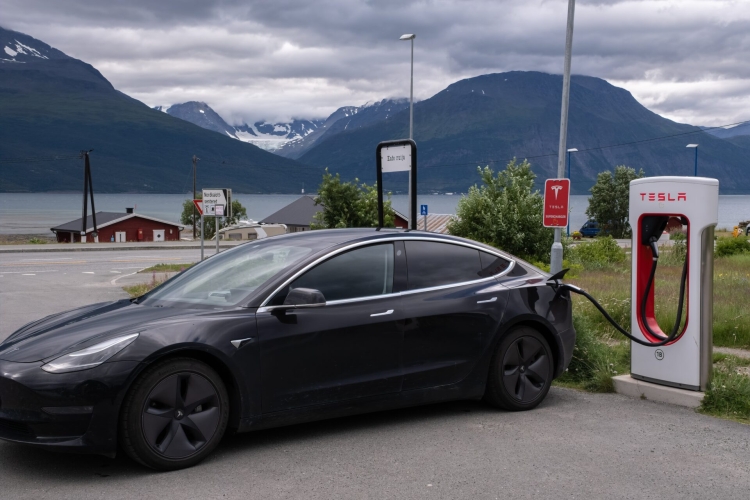Norway is home to around half a million electric cars, and that’s only the beginning. What does Estonia have to learn from this Nordic pioneer?

The electric car market has been growing for quite a few years now, and their use is being promoted nationally in a number of countries. For example, the Norwegian parliament has set itself the objective of all new cars sold from 2025 being emissions-free, which is to say electric or hydrogen-powered. Nordic Energy Research senior adviser Svend Søyland says this plan is doable.
“In terms of achieving it, I think we’re on the right track,” he nods. “The main question is to what extent we keep up the incentives.” By February 2022 more than 470,000 electric cars had been registered in Norway. The market share of such vehicles in the country had already reached 64% by 2021, with almost 75% of all new cars sold during the year being fully electric. By all indications, says Søyland, that figure is likely to be 80% for 2022.
“What’s interesting is that Tesla’s new smaller model, the Model 3, is the highest-selling car in Norway among vehicles of any engine type,” he says, adding that even among luxury cars the best-seller in Norway is the electric Porsche.
Norway’s success story with electric cars is mostly the result of the incentives the country has offered drivers, which were devised in order to bring emissions-free vehicles onto the market. Since the early 1990s, this has seen successive Norwegian governments adopt incentives to speed up this transition.
Benefits for electric car drivers
Søyland says this has resulted in more free parking, toll-free road use and, in many local government areas, free charging for electric car drivers in Norway. Now, however, the system of incentives as a whole is up for review.
The current government has decided to retain these perks for emissions-free cars only until the end of 2022, after which they will be reviewed and adjusted in parallel with the development of the market.
The issue of parking fees has already been decided, inasmuch as it has been left up to local governments to determine how much (if anything) they charge, while the cost of ferry tickets for electric car drivers has been fixed at half the normal price. Drivers will now also have to pay to charge their cars, and their access to bus lanes will be somewhat restricted.
However, none of these changes have had a devastating effect on the sales of new electric vehicles – quite the reverse, says Søyland. “More people are buying small and medium-sized electric vans and buses as well now in addition to cars,” he explains. “The lower rate of VAT on them, the lower cost of insuring them and the lower rate of annual car tax on them all play a part in that.”
Norwegians own almost three million cars
One problem to which a lot of attention is turned in Norway is that the number of cars on the roads and in people’s ownership is on the rise. “True, they’re not constantly being driven, but there are a lot of cars in Norway,” Søyland says. “There were almost three million personal vehicles in the country by the end of 2021, which was roughly 10% more than the year before.”
Simple calculations show that Norwegians bought around 276,000 new cars in 2021. With the majority of the cars in Norway still being petrol- and diesel-powered, it raises the question of whether the country has a plan to remove them from its roads.
“The way the situation’s changed is leading to that,” says Søyland. “People are already used to electric cars, which are becoming their first choice rather than just the second family car, since newer models are able to drive a lot further.”
Anyone walking around the city centre in Oslo, for example, will find that most of the cars there are electric. “And given the rising cost of fuel, switching to an electric car makes as much sense financially as it does environmentally,” Søyland adds.
Rent an electric car to explore Norway
Tourists are also encouraged to use electric cars in the country. “I’m sure all rental companies are offering electric vehicles these days,” Søyland says. “That means it’s easier for tourists and people coming here for business and other reasons to make the greenest possible choice.”
Rental companies themselves are encouraging people to use electric cars. The main concern most people have is where they can charge electric cars and whether there are enough charging points – but there are almost 17,000 throughout Norway, including 3300 rapid charging stations.
In terms of electric mobility as a whole, Søyland says more and more buses in bigger cities are also making the switch. “30-40% of the light commercial vehicles currently being sold are electric, and production and sales of medium-sized electric commercial vehicles are increasing,” he explains.
Advances in the use of electric vehicles
One interesting aspect of the uptake of electric vehicles in Søyland’s view is that property owners – especially local governments – have started to require carbon neutrality on building sites. “When putting together their tenders, construction companies are having to indicate whether they plan to use biofuel-powered or electric machinery,” he says.
A specialist in the relationship between energy and the climate, Søyland is also a project manager for Nordic Energy Research and the Green Economic Growth programme. As such, he is well qualified to say what the outlook for a country like Estonia might be, based on the success achieved in Norway.
Setting an example to other European countries
According to the data of the European Automobile Manufacturers Association, 9.9% more electric vehicles were registered in Europe in Q2 2022 compared to the same period the year before. There has also been marked growth in Estonia: an almost ten-fold increase in just five years. In the last year alone the rise has been even greater, with 917 electric vehicles registered in the first three quarters of 2022, compared to 808 in total in 2021.
Søyland says that one clear advantage the use of electric vehicles brings is an improvement in air quality in cities and an overall reduction in emissions.
“The fact that the taxes on cars powered by petrol and other fossil fuels are as high as they are in Norway plays an important role as well, of course,” he smiles. “That makes electric cars a lot more attractive.”
The situation in the Baltic States is more complicated, he says, simply because cars here are cheaper.
Nevertheless, he feels that if the state were to work with local governments to make owning electric vehicles easier for people, the benefits would soon make themselves known. “One option is to put more and more electric buses and other forms of public transport on the roads,” he suggests. “That will generate a need for new services and stimulate the economy.”
In cooperation with the news portal Geenius, the Norwegian embassy in Estonia and other Nordic embassies in the country, we launched a series of articles in which we shed light on the Nordic economies of the future and cooperation between Estonia and its Nordic neighbours. The articles can be found online at https://ari.geenius.ee/blogi/pohjamaade-tulevikumajanduse-blogi/.


